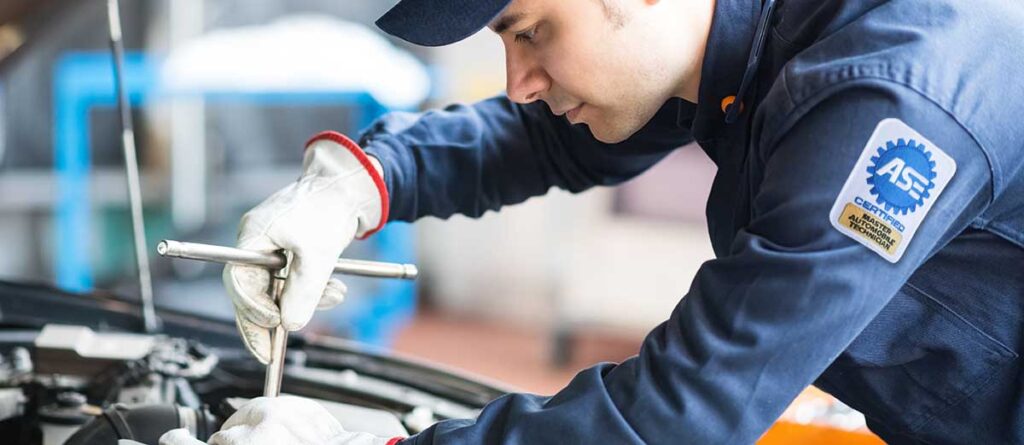
Portrait of an auto mechanic at work on a car in his garage
On the side of every engine block, there is a line of circular depressions about 1.5 inches wide & 1/4 inch deep. These are actually holes in the side of the engine which are plugged with a metal plug called a “freeze plug” or “expansion plug”. Freeze plugs are also known as frost plugs, engine block expansion plugs, core plugs, or Welch plugs. If you run water with no antifreeze in your car’s cooling system, the water can freeze. The frozen water will expand, which may crack the engine block and destroy your motor. Freeze plugs are meant to pop out and prevent this, but they do not work every time. Freeze plugs are made of galvanized steel, and they are prone to rusting. This is why it is important to always run antifreeze in your cooling system; this will prevent it from rusting.
If you have a bad freeze plug, your vehicle will leak coolant. If you have a slow cooling system leak that comes and goes, you may have a pinhole freeze leak. Freeze plugs are in different places on different cars, but normally there are at least 3 of them down the side of the block, and on the back of the block between the engine & transmission. Some are easy to access, but some will require removing various parts from the engine, or even removing the entire transmission and/or engine to replace. Some cylinder heads also have smaller plugs in them, often under the intake or exhaust manifold. If you have water or coolant leaking from the side of your engine or between the engine & transmission, you most likely have a bad freeze plug. Sometimes the hole in the freeze plug is very small, and can periodically be blocked by debris from the cooling system.
If the leak is slow and small, a stop leak or block seal compound might work. However, this is usually a temporary solution at best – it might not work, might not last for long, and could clog up something else in your cooling system. The right way to fix it is to replace the freeze plug.
To remove a freeze plug, it is first hammered into the block with a big screwdriver or a large punch. When it “pops through” it is pried back out of the hole sideways with a pair of pliers or a screwdriver. Care must be taken not to scratch the surface of the hole where the plug sits, or it could leak around the circumference of the new plug. After the plug is removed, the hole in the block is cleaned with sandpaper to remove the corrosion and old sealant. This is also necessary to prevent leaks from the new plug. Then, after the surface is properly prepared, the new freeze plug is hammered in with some sealant using a special tool.
Freeze plugs are an essential part of your engine, because they keep coolant from leaking out. If you neglect a leaking freeze plug for too long, your engine’s coolant could potentially leak to a level where it can no longer effectively cool your engine, and cause it to overheat, risking extensive damage. If you suspect that you may have a faulty freeze plug on your engine, bring your vehicle in to your Certified Auto Repair Specialist of Pasadena today to get it inspected.

